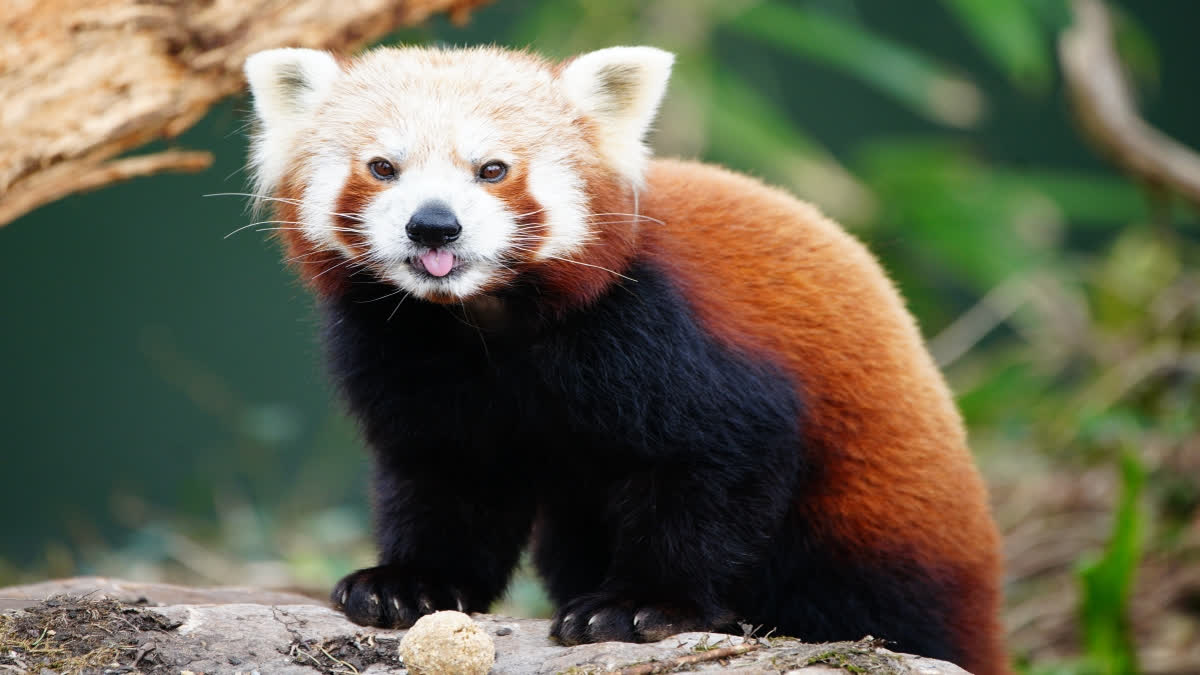Hyderabad: International Red Panda Day is celebrated on the third Saturday in September — September 21 this year — to spread awareness regarding yet another species that is near extinction. Red Pandas are adorable creatures that reside in the Eastern Himalayas region of the world. This includes places like China, Nepal, and Bhutan. Like hundreds of other animals on Earth, this species also faces a threat of extinction soon.
History of the day:
The day was launched by the Red Panda Network in 2010, and the first international red Panda day was celebrated in September that very year. Since then, the need to continue honoring the day has only increased due to global warming and climate change.
Purpose of International Red Panda Day:
International Red Panda Day is an event dedicated to raising awareness about the red panda, which is an endangered animal.
Celebrated worldwide, International Red Panda 0 aims to educate people about the importance of red pandas and the need for their conservation. The day helps people learn about the red panda's unique characteristics, threats, and how they can help preserve the species.
What are red pandas?
The red panda is a tiny tree-dwelling mammal located in the woodlands of India, Nepal, Bhutan, and the northern mountains of Myanmar and southern China. Red pandas do well in forests with bamboo-filled understories at 2,200-4,800m, but they have also been seen at 1800m.
Red pandas are arboreal, indicating they are well-adapted to climbing and prefer to spend a large portion of their time in trees. It is the only surviving species of the genus Ailurus and the family Ailuridae, which are a type of bear family. The red panda or Ailurus fulgens as it is known to science, was first described by Cuvier in 1825. The first known specimen to have arrived alive at a zoological collection outside its native land, was that acquired by London Zoo on 22 May 1869.
What is the purpose of the red panda?
Red pandas play a crucial role in maintaining the equilibrium of their forest habitats by serving as prey for their native predators such as snow leopards and jackals. They also help control bamboo populations, preventing them from overgrowing and impacting the growth of other plants.
Why do we celebrate International Red Panda Day?
The reason International Red Panda Day is celebrated is to spread awareness of the red panda and promote the importance of protecting them from extinction. Unfortunately, red pandas are an endangered species, and they face lots of threats including poaching, deforestation and habitat loss.
By celebrating International Red Panda Day, we can help raise awareness about these fantastic, fuzzy animals and the threats that they face. It’s also a great opportunity to start a fundraiser for organizations that protect red pandas, such as the Red Panda Network.
Facts about Rare Red Panda:
Red Pandas Are The Original Pandas: Red pandas were given the name "panda" prior to the black and white version. In 1825, almost half a century prior to the discovery of the giant panda, Frédéric Cuvier was the first to depict the red panda as the most exquisite creature he had ever witnessed. The red panda is often mistaken to be most closely related to the giant panda, but research indicates that its closest relative is actually the raccoon.
Categorisation: Red pandas are vegetarian carnivores, meaning they are descended from carnivores but mainly eat bamboo and insects.
Appearance: Red pandas are characterised by their thick red fur, short snouts, pointed ears, and bushy ringed tails in terms of their appearance. Teardrop-shaped markings can be seen beneath their eyes as well.
Habitat: Red pandas hail from the Eastern Himalayas and primarily inhabit trees for most of their day.
Climbing:Red pandas are equipped with a pseudo thumb that is actually an elongated wrist bone, aiding them in climbing trees and consuming bamboo.
Communication:Red pandas communicate through a range of noises such as growls, barks, squeals, hoots, bleats, grunts, and twitters.
Lifespan: Red pandas have a lifespan of up to 23 years and start exhibiting signs of aging at approximately 12 to 14 years of age.
Reproduction: Red pandas have a gestation period of 135 days and typically give birth to 1-4 cubs.
Diet: Red pandas primarily consume bamboo, along with roots, berries, eggs, and acorns. They must ingest 20 to 30 per cent of their body weight in bamboo daily, which can amount to eating up to 20,000 leaves.
